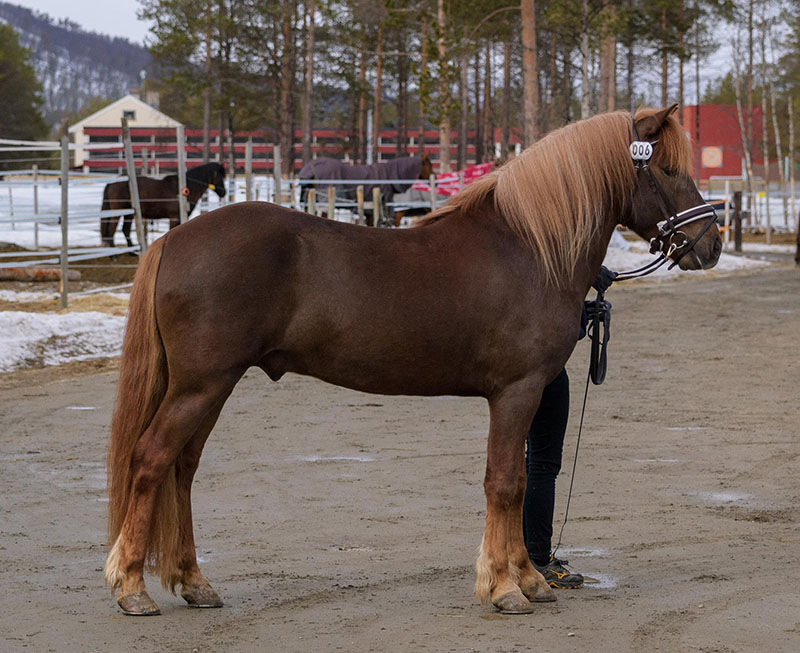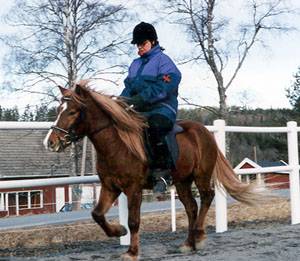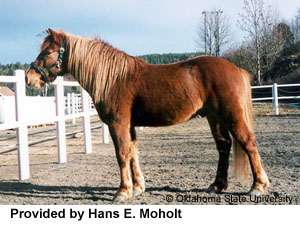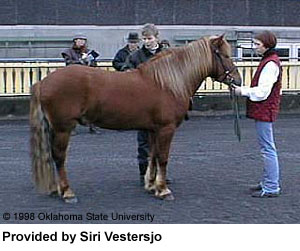Nordland Horses
Also Known By: Northland Pony, Lyngen, Lyngshest (Norway)
There is a variety of ideas as to the origin of this breed. Research indicates that it came into Norway from the east during very early times. For various reasons it was forced northward where it lived and developed through the centuries, but after World War II the breed was at the door of extinction. It is of the northern type and is similar to the Lofoten.
Because of varied environmental conditions and scattered, locally centered breeding districts in Norway, this pony was given several local names. The breed developed differently in different districts through crossing with other breeds.
Some believe that the Nordland is the result of a mixture of two different types of the same race – one type from Lyngen in northern Troms and one from Norland, based on individuals from the district of Lofoten. The Lyngen type was somewhat larger and stronger, mainly chestnut, whereas the Norland type was smaller, with a heavier mane and tail and a wider variation of color. The distinction is less evident today because of crossbreeding between the two types. However, there still are some individuals that are typically one or the other. Breeding of the race was resumed immediately after World War II, but it was difficult task due to poor economy, sparse population, and a shortage of animals.
Conformation of the pony is generally good overall. All colors occur and are accepted with the exception of dun and pied. Chestnut color is dominant in the area of Troms.
This pony is easily trained, willing to work, energetic, and good tempered. The breed is relatively free of health problems and will often reach the age of thirty. Nordlands are also known for retaining their fertility into advanced ages.
Today this pony is used mostly for riding or driving or as a pack horse. The Nordland has also attracted favorable attention in jump racing and show riding.
Status: Rare
References
Hendricks, Bonnie L., International Encyclopedia of Horse Breeds, Univ of Oklahoma Press, 1995.
Mason, I.L. 1996. A World Dictionary of Livestock Breeds, Types and Varieties. Fourth Edition. C.A.B International. 273 pp.




